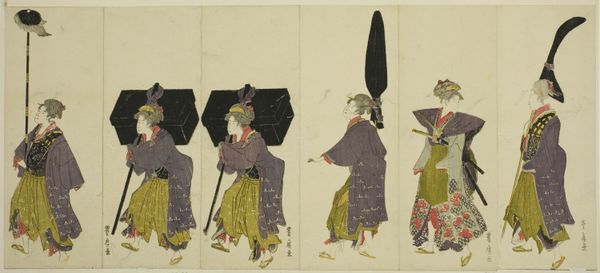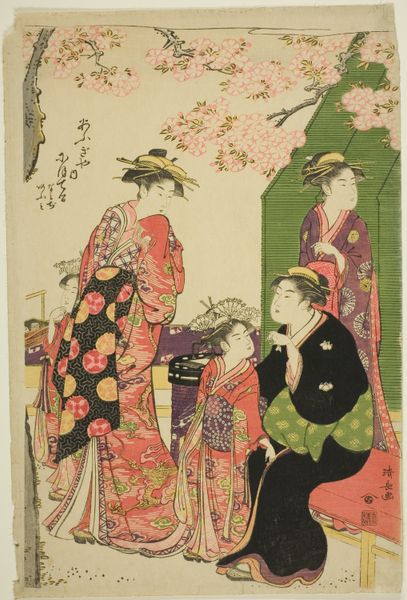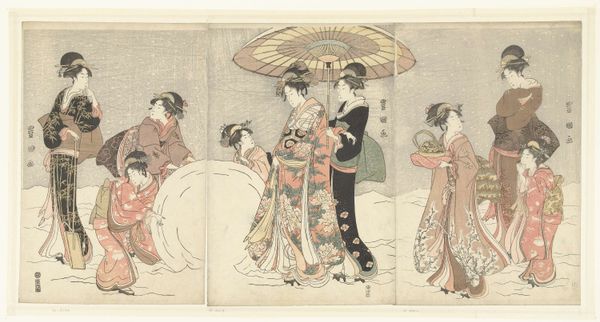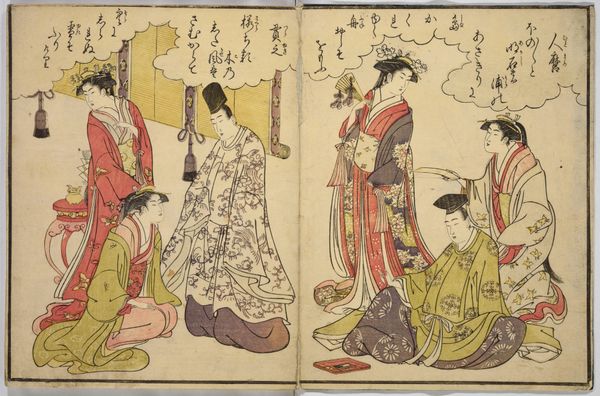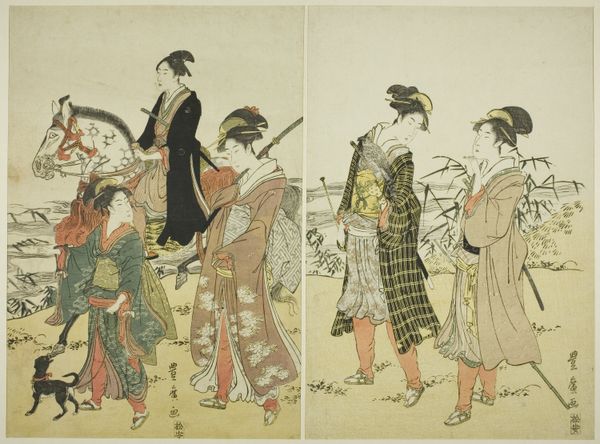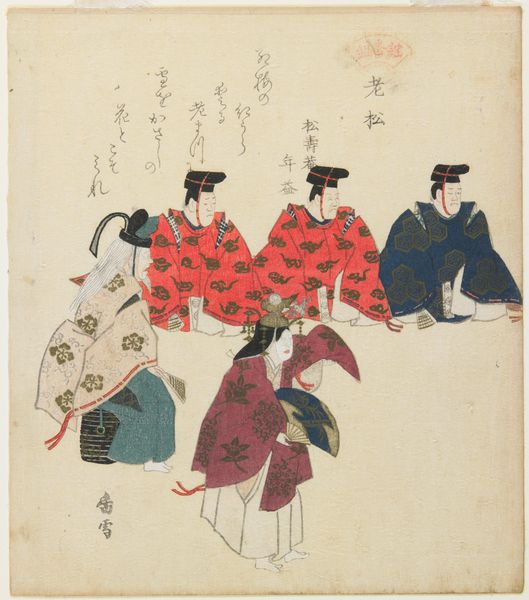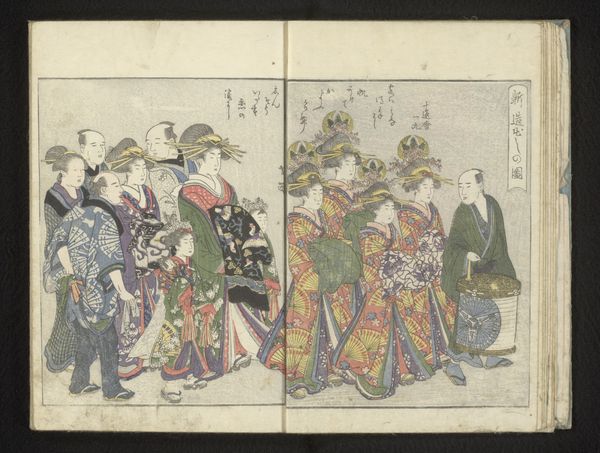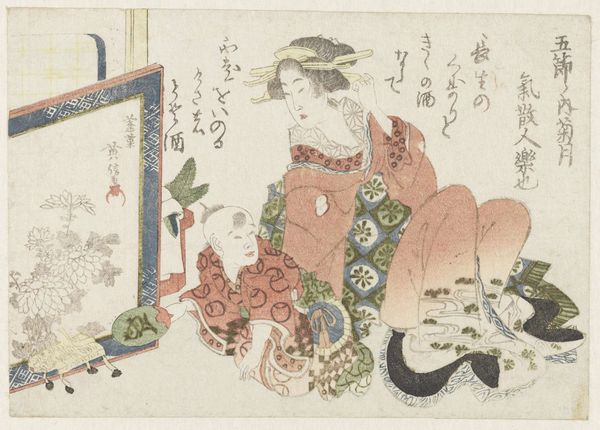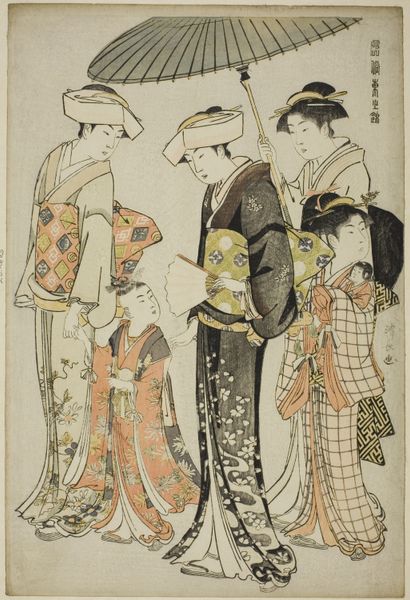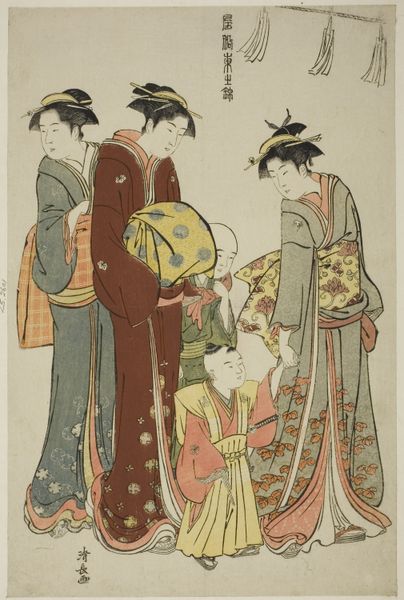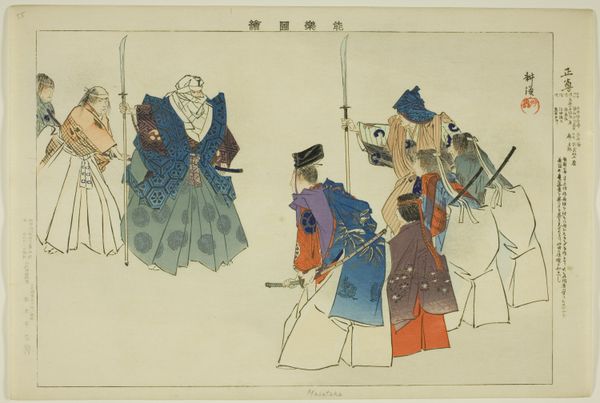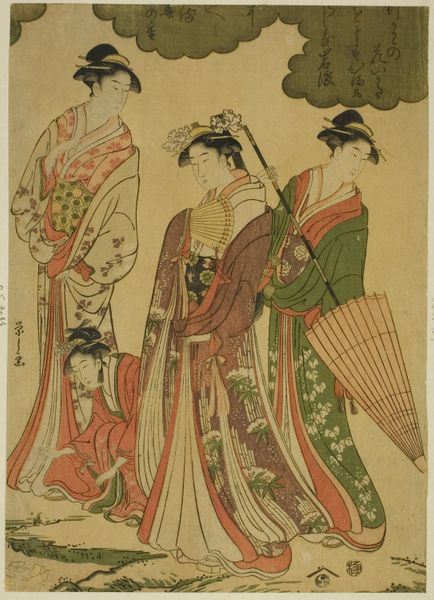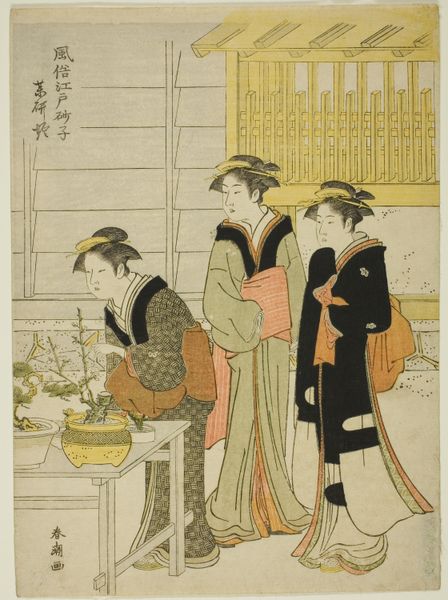
print, paper, ink, woodblock-print
#
portrait
# print
#
asian-art
#
landscape
#
ukiyo-e
#
paper
#
ink
#
woodblock-print
#
genre-painting
Dimensions: Overall (twelve sheets) 9 1/4 × 40 1/2 in.
Copyright: Public Domain
Curator: This is Utagawa Toyohiro's "Parody of a Daimyo Procession," a woodblock print created around 1805-1807. It's part of the ukiyo-e tradition, made with ink and color on paper. Editor: It strikes me immediately as oddly… subdued. The palette is quite muted, and the figures, despite the title, seem to carry themselves with a solemn dignity. Curator: That subdued feeling likely comes from the printmaking process itself. The woodblock requires careful carving, layering color by color, limiting the potential for bright, contrasting shades. The labor behind this imagery—the artisans producing these works in multiples—deserves attention. Editor: Absolutely. And context is key here. While visually reserved, the print slyly subverts the power structure. The daimyo processions were displays of feudal lord wealth and power, weren't they? But the artist is using parody to speak truth to power. Who are these women, and why are they enacting such a scene? Curator: Right, it suggests a critical perspective on class and status within Edo society. The materials involved are common - wood, paper, pigments - but the arrangement hints at an artistic and social commentary available for the broader population, far from noble materials and the exclusive aristocratic domain. Editor: Indeed. Perhaps this playful subversion can teach us to confront traditional notions of power. After all, art has often served as a form of silent protest. This challenges the status quo by representing figures from potentially marginalized roles—such as the pleasure quarters of Edo—acting out this procession, appropriating aristocratic symbols and, so, temporarily stepping out of the rigidly prescribed identity enforced onto them. Curator: It is through the skilled handling of modest materials, through a mastery of labor and means of production, that social hierarchies can be inverted through visual arts, democratizing, if only for a moment, societal control. Editor: Thinking about how we also enact our own daily parades through society today, performing various prescribed identities and struggling against external forces helps me better see the timelessness in this piece and the work that art is capable of when it is pushing back. Curator: I appreciate the nuance it adds, drawing attention to both its immediate materials and the subtle layers of critique embedded within. Editor: Ultimately, I believe this print serves as an important example of how art intersects with history and power, using accessible methods to foster critical dialogue, then and now.
Comments
No comments
Be the first to comment and join the conversation on the ultimate creative platform.
